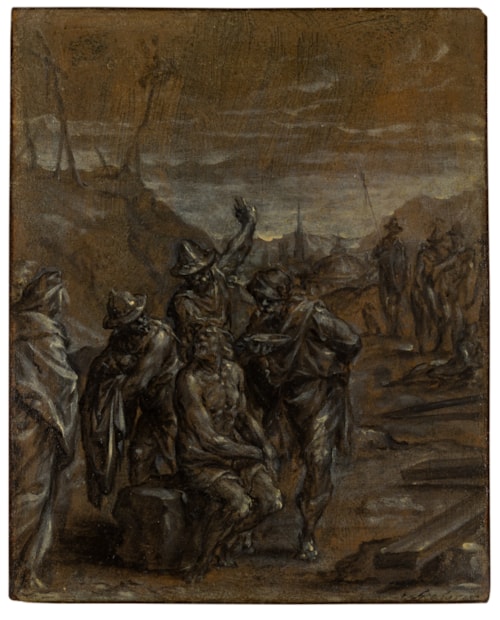
Dirck BARENDSZ
Amsterdam 1534 - Amsterdam 1592
Biography
Dirck Barendsz., sometimes known as Theodorus Bernardus, left Amsterdam for Italy in 1555, at the age of about twenty-one. He spent several years in Venice, where, according to his biographer Karel van Mander, he worked as an assistant in the studio of Titian, and he may also have spent some time in Rome. Almost nothing survives of Barendsz.’s work in Italy, however, although a monumental wall painting of The Last Judgement on the internal facade of the Imperial abbey church at Farfa in central Italy, unsigned but prominently dated 1561, has recently been convincingly attributed to him. Barendsz. was back in Amsterdam by 1562, the date of his earliest known work; a group portrait of the civic guard of Amsterdam which is now in the Rijksmuseum. He worked in Amsterdam for the remainder of his career, and van Mander praises his role in introducing the new and modern Italian style (‘de rechte manier van Italien’) into the Netherlands. Certainly, the particular influence of Venetian 16th century painting is evident in much of Barendsz.’s mature work. Very few paintings by the artist survive today, however, of which the most important is a triptych of The Adoration of the Shepherds of c.1565, now in the Stedelijk Museum in Gouda. That the artist must have received other major commissions is shown by the existence of a large drawing of The Fall of the Rebel Angels, in the Royal Collection at Windsor Castle, which must be a study for a now-lost altarpiece. Apart from a handful of painted portraits, Barendsz.’s surviving oeuvre consists of oil sketches, drawings and engravings made after his designs.


